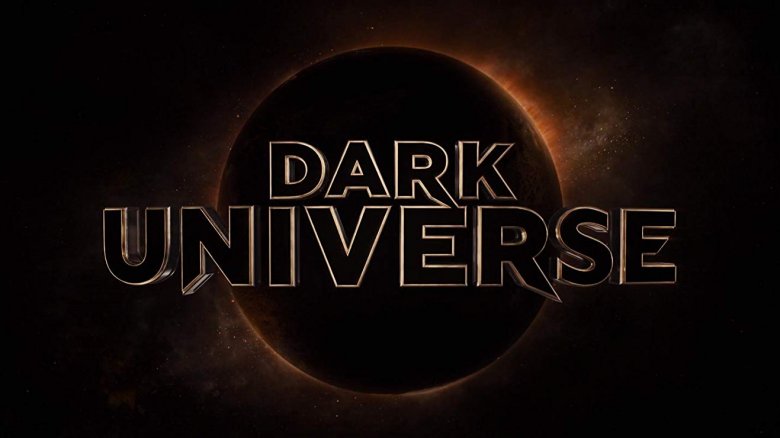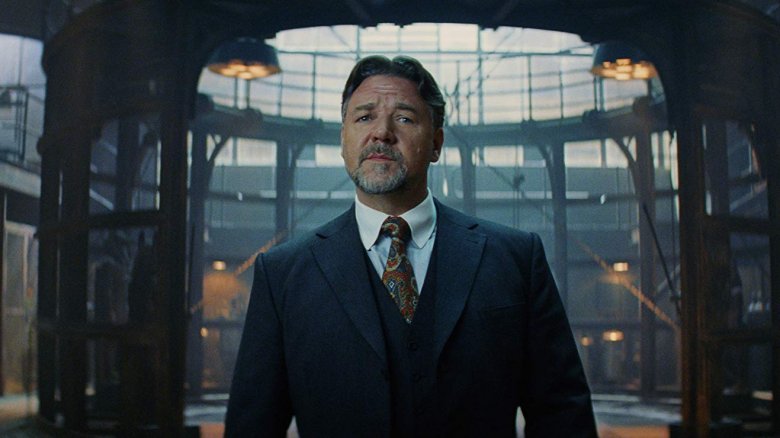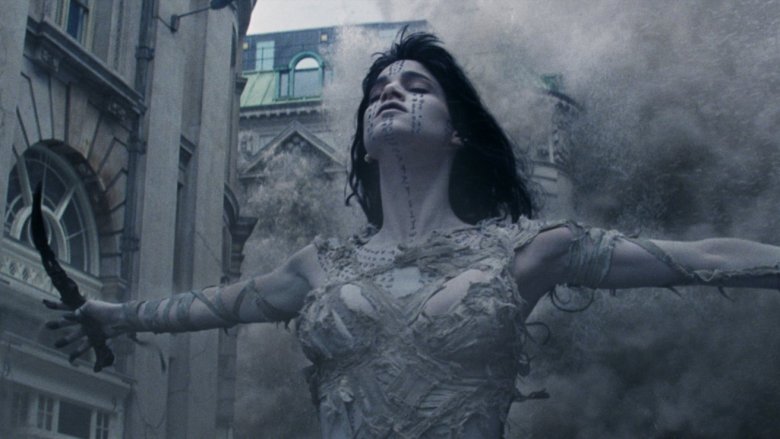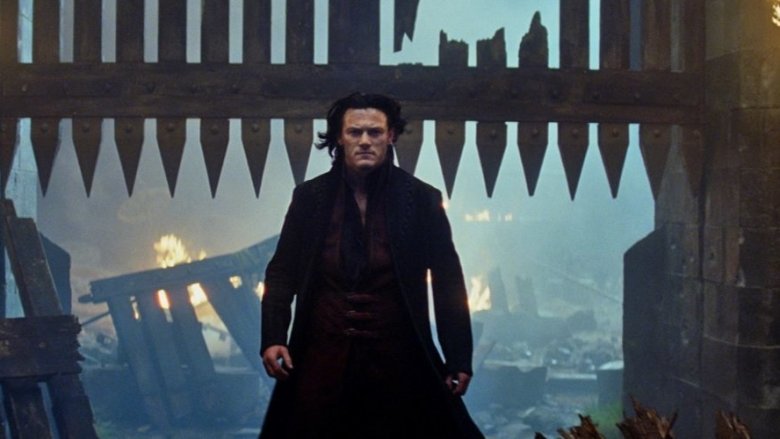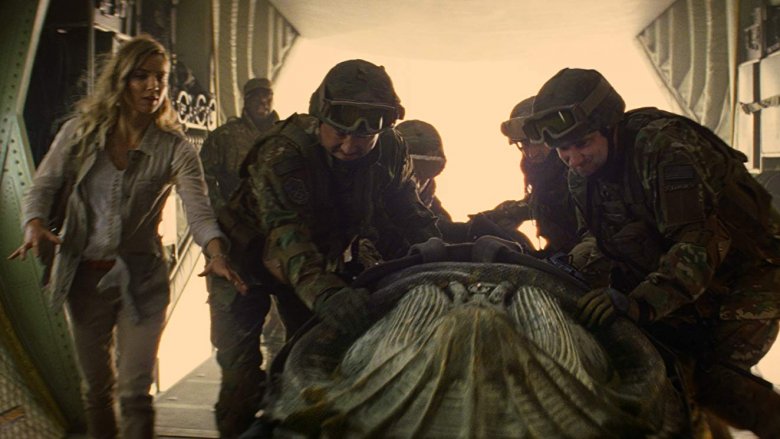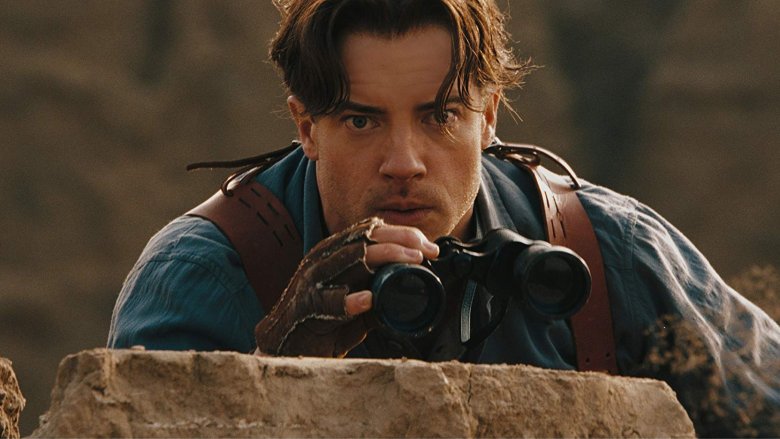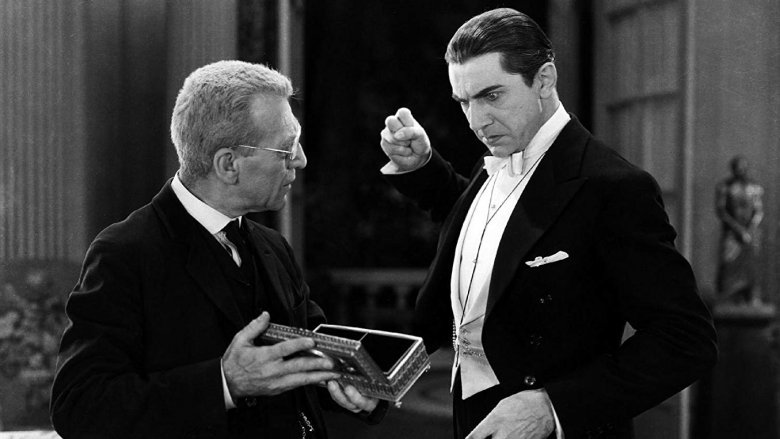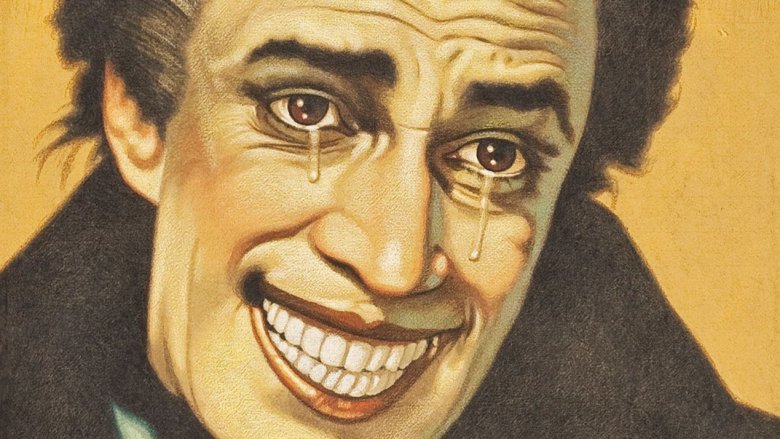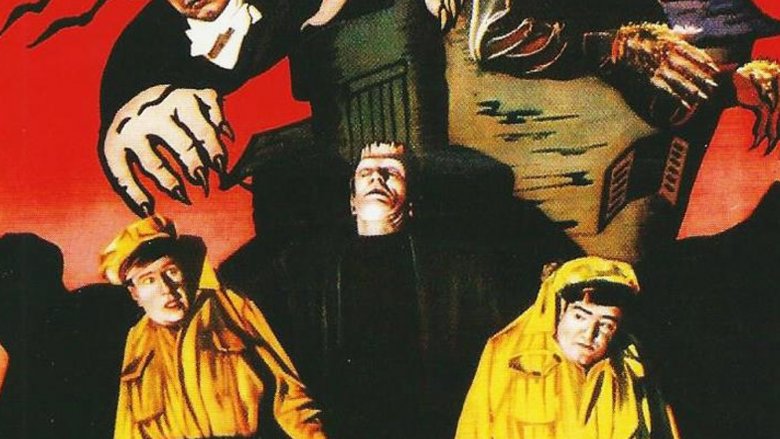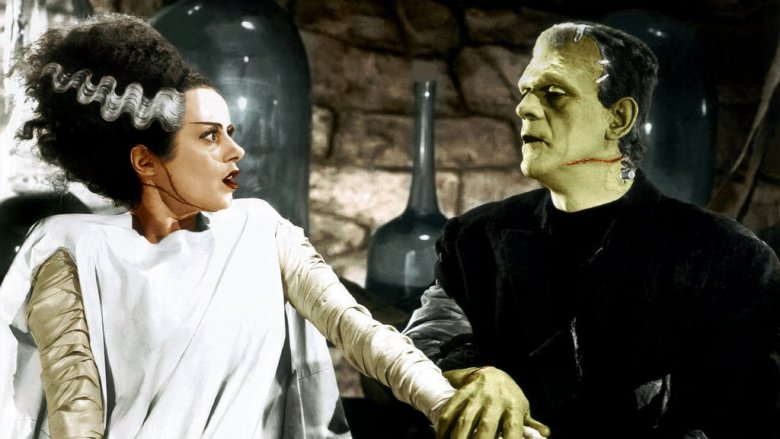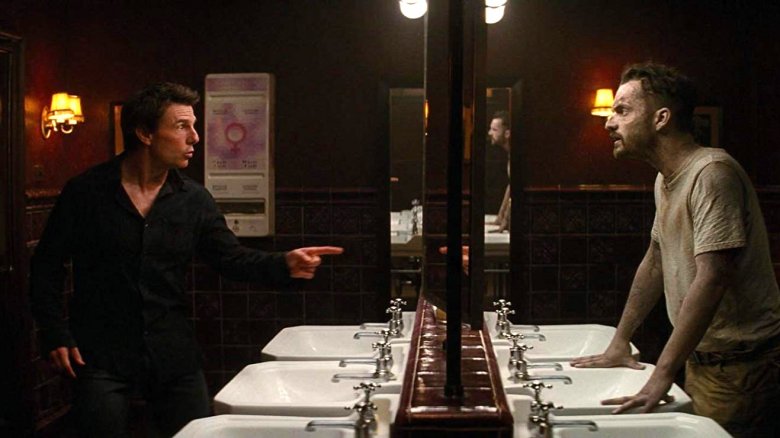What We'd Want To See In Universal's Dark Universe
In 2014, Universal Pictures attempted to launch an ambitious new effort to revamp its library of classic movie monsters like the Mummy, the Invisible Man, Frankenstein's Monster, Dr. Jekyll and Mr. Hyde, and more. They called it "Dark Universe," and attempted to kick into high gear with a reboot of The Mummy that introduced a new version of the title monster, cast Tom Cruise as a franchise hero, and even created a secretive organization that would help link the films together.
It... didn't work. The Mummy was a critical and commercial failure, and while it seemed at first like the studio might push ahead with other planned films anyway, the concept of the Dark Universe ultimately lost traction. Instead, Universal is moving forward with a more individualized filmmaking approach. So far they've drafted writer/director Leigh Whannell for a new Invisible Man film and writer/director Paul Feig for a monster comedy called Dark Army, but otherwise the future of this shared monster universe, if there is one, remains very much in the air. With that in mind, as new Universal Monsters films finally start to march forward again, here are thoughts about the best case scenario for a potential future version of the Dark Universe and how it would look in a perfectly spooky world.
The Dark Universe needs to take its time
Midway through The Mummy, Universal's 2017 effort that was supposed to be the launching pad for the wider Dark Universe, we are introduced to Dr. Henry Jekyll (Russell Crowe). Jekyll is a member of the Prodigium, a secretive organization devoted to investigation and, if necessary, eradication of the supernatural. Jekyll welcomes the other characters, and by extension the audience, to "a new world of gods and monsters" in what is supposed to be a grand gesture of interconnectivity, a kind of S.H.I.E.L.D. for the monster universe.
Here's the problem, though: We've barely been given time to care about any of the characters in the Dark Universe at that point, be they human or monster. The story's only just started rolling, and while the notion seemed to be that Prodigium could offer both relevant plot information and a sense of a greater world in one swift stroke, its introduction serves as a bit of a derailment. What's more, the idea that all of these future monster characters will be connected not through weird encounters out in the world but through some shadow organization that happens to have files on all of them is just not as interesting as it should be, particularly so early on. So, if you're going to try to rebuild the Dark Universe, take your time with the interconnectivity, and get us to care about the new monsters first.
A Dark Universe with diversity in front of and behind the camera
Though The Mummy ultimately did not work as a launching pad for the Dark Universe, the film did at least a few things right, and one of them was casting Sofia Boutella in the title role. By swapping the gender of the mummy and giving us a charismatic presence opposite Tom Cruise's rather cookie-cutter action hero character, the film gave us something we hadn't necessarily seen before, even if it ultimately fizzled.
Though many of the films remain absolute classics, it's hard to escape the fact that the original Universal Monsters films are rather white and rather male. If you're going to update those characters and the weird worlds they live in, some diversity is in order, and not just in terms of skin color in front of the camera. If this is going to be a truly vibrant universe of characters and concepts that audiences want to keep coming back to, you need a variety of voices with a variety of storytelling concerns, because if we just want to see the same old monsters again, those movies already exist.
No prequels in the Dark Universe, please
Before The Mummy arrived and heralded the more-or-less official launch of the Dark Universe which ultimately went nowhere, another film was meant to launch a new franchise of Universal Monsters films and also didn't quite manage to get far enough of the ground. The film was Dracula Untold, a prequel to the events of Dracula that attempted to explain why a fierce warrior and protector of his people turned into the ultimate Prince of Darkness.
Now, there's nothing inherently wrong with origin stories, and many of the great monster movies — Frankenstein chief among them — show us exactly how and why the monster came about. When a character like Dracula already exists in a certain way, though, there's not a great deal of need or demand for feature-length prequel tales. And besides, the only Dracula origin we ever need was dished out in Francis Ford Coppola's adaptation of Bram Stoker's novel in 1992. Once you've said "Dracula was a brave warrior whose wife died, and he got so mad he renounced God and stabbed a church until it bled," anything else pales in comparison.
But seriously, prequels are already a tough sell for moviegoers, particularly when it comes to characters like Dracula and the Mummy. Give us the monsters as monsters, and work forward from there.
The Dark Universe needs to leave the Mummy alone for a while...
Kicking off the Dark Universe with The Mummy wasn't necessarily a doomed-to-fail prospect. After all, the film had at least a semi-interesting hook thanks to the gender-swapping of its title monster, and the production managed to hook Tom Cruise to do all the heroics. That said, it was still puzzling that Universal chose this film as the thing that would launch a new world of "gods and monsters," chiefly because it was the second Mummy reboot in less than 20 years, and plenty of moviegoers still had fond memories of the last films.
Again, this doesn't mean The Mummy couldn't have succeeded under any conditions, but now that the Cruise/Boutella version of the story has come and gone, Universal should steer clear of the franchise for a little while. Yes, characters like Dracula and Frankenstein's monster have certainly seen plenty of re-imaginings of their own over the years, but The Mummy wasn't just trotted out as the remake. It was trotted out as a flagship, and the flagship sank. Best to leave it hidden in deep water for a little while, and roll it out again if and when the Universal Monsters franchise is on more solid ground.
...Unless you can get Brendan Fraser
If you really must revisit The Mummy in the near future, though, there is a way around the idea that it's a tired property that audiences don't respond to anymore, and its name is Brendan Fraser. Though he's no longer starring in action blockbusters, Fraser was one of the key ingredients that made the 1999 Mummy reboot successful, alongside co-stars Rachel Weisz, Arnold Vosloo, and Oded Fehr. Most of the original cast returned for the sequel, The Mummy Returns, but Fraser alone returned nearly a decade after the first film for The Mummy: Tomb of the Dragon Emperor. The third installment didn't get the same level of attention as its predecessors, but it still worked, and a key reason was Fraser's sense of goofy, determined fun as Rick O'Connell.
With that in mind, if you really want The Mummy to come back anytime soon, just set the new monster films in the same continuity as the 1999-2008 Mummy series and let a slightly older Rick continue his adventures in them.
Assemble a Dark Universe stock company
There are a lot of things that make the classic Universal Monsters films distinctly fun, from their spooky atmospheres to the way the sequels often get increasingly strange to accommodate necessary plot changes and the makeup designs that defined the central roles. One of the less-discussed delights of this loose grouping of classic films, though, is the way Universal continued to use certain stock players over and over again in different films.
Yes, Boris Karloff and Bela Lugosi famously played more than one role in the Universal Monsters films, with Karloff playing both Frankenstein's Monster and the Mummy and Lugosi playing both Dracula and Ygor, but they weren't the only ones. The supporting cast of the Universal Monsters classics often featured familiar faces like Edward Van Sloan (Dr. Waldman in Frankenstein, Van Helsing in Dracula, and Dr. Muller in The Mummy), Dwight Frye (Renfield in Dracula and Fritz in Frankenstein) and more. This, of course, was thanks in part to the studio contracts of the day, but it also created a sense that these films were interlinked even before the monster rally films like House of Frankenstein started to bring them together. It's harder to pull off now, but bringing familiar faces back — even for small roles — could add a layer of fun to a future Dark Universe.
Don't just use the obvious monsters
In envisioning the Universal Monsters, we tend to picture a few key players that each had their own sub-franchise: Dracula, Frankenstein's Monster, the Mummy, the Invisible Man, the Creature from the Black Lagoon, the Wolf Man, and perhaps the Phantom of the Opera if we're feeling adventurous. These are all icons of cinema for a reason, and they certainly have their place, but if you're really hoping to create a rich universe audiences will keep coming back for, you need to think a little bigger.
That's why it was particularly encouraging to hear that the original Dark Universe plans called for a Bride of Frankenstein movie that would perhaps feature the title character a bit more, but even that's not the extent of the expansions here. The golden age of Universal horror cinema in the 1930s and the 1940s also featured films like The Raven, The Black Cat, and The Man Who Laughs, all of which added their own layers of intrigue and terror without necessarily adhering to the same formula as the other monster films. If you're truly trying to build on the Universal Monsters legacy, films like those — and the characters and devices they could contribute — shouldn't be ignored.
Make sure comedy always has a place
By the late 1940s, Universal was on the lookout for new things to do with its monster characters after years of sequels, sidequels, and the occasional team-up. That's when the legendary comedic duo of Bud Abbott and Lou Costello came in. Between 1948 and 1955, Universal released five films starring the duo as they met various Universal Monsters, including Abbott and Costello Meet Frankenstein, Abbott and Costello Meet the Mummy, and Abbott and Costello Meet the Invisible Man.
These films, of course, relied on a formula that was bolstered by the comedic timing of the duo at the heart of each adventure, but they still work as amusing mashups of spooky and silly, while also underlining the inherent strangeness of the Universal Monsters as a concept that had, at that point, been kicking on the big screen for nearly two decades.
For some fans, Abbott and Costello became just as much a part of the Universal Monsters legacy as Dracula, and that shouldn't be ignored in any future Dark Universe. Thanks to filmmakers like Paul Feig and his developing Universal Monsters project Dark Army, it hopefully won't be.
Embrace the subgenres
When you think about Universal Monsters, you think about horror, and if you think a little longer your mind probably summons up images of fog-swept forest sets and cobweb-infested castles, or Dracula's cape held up past his chin and the local villagers pursuing Frankenstein's monster armed with torches and pitchforks. It's certainly an unforgettable aesthetic, and one of that shouldn't be left behind, but it's far from the only thing Universal horror films from the classic monster era were good at.
If a Dark Universe of any kind is going to succeed, it needs to embrace a variety of subgenres, in the same way that the 1999 Mummy film took a creepy horror movie from the 1930s and added the element of archaeological adventure while never ditching the scares. Universal's horror legacy is full of science fiction, creature feature adventure, darkly comic satire, film noir, and even the occasional attempt at a Southern Gothic tale. One of the best things about these characters is their adaptability. Dracula can slink around a castle, yes, but he can also traverse the American south or perch atop a skyscraper or even coax a laugh or two out of his audience. Embrace that adaptability.
Don't be afraid to get weird
There's a lot about the 2017 version of The Mummy that doesn't quite work, but it does have some interesting ideas, and one of those comes out in the decision to make Nick (Tom Cruise) an undead vessel waiting to be possessed by the Egyptian god Set. Over the course of the film this takes different forms, covering both horror and comedy, but the idea that Tom Cruise spends most of the movie as a guy who's still coming to grips with having just returned from the dead is an admirably weird choice.
Looking back over the history of the Universal Monsters, there's quite a bit of weird stuff, from set decoration choices to resurrected characters to the idea that Dracula would re-emerge in Louisiana as a guy calling himself "Count Alucard." That weirdness, including things like the art deco touches added to the castle in Son of Frankenstein in 1939, is part of what keeps the films fresh and interesting even as they start to feel the weight of years. The monster plots might be predictable, but the things surrounding them often aren't, and it's often those touches of unpredictable strangeness that keep audiences coming back to these films decade after decade. It creates a "You have to see this" vibe, even if the movie isn't particularly good, and the Dark Universe could always use a little of that.
